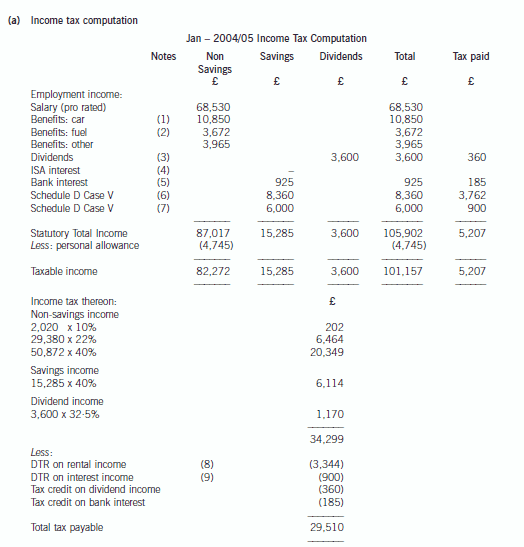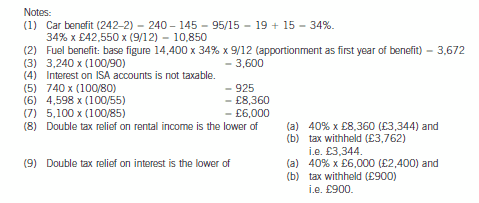宁夏考生:ACCA考试成绩有效期是多久?
发布时间:2020-01-10
当人生面对许多选择的时候,我们需要谨慎;当我们没有选择的时候,就把压力当挑战,给自己一个信心,近日,参加ACCA考试的小伙伴来咨询我一些关于ACCA考试成绩有效期的问题,接下来51题库考试学习网将一一为其解答,建议大家收藏起来哟~
ACCA F阶段(AB-FM)课程考试已正式取消考试期限,换句话说,已经考完的各F阶段科目的考试成绩永久有效,不必重新考试。
不过,对于ACCA核心课程(P阶段)的考试成绩还是设置了7年的有效期。每位学员必须在通过第一科战略课程之日起,7年内完成所有的P阶段科目考试。(超出规定年限就只能重新考试)
ACCA考完一般都需要多久?
ACCA每年有4次考季,每次最多可以报考4门,每年最多报考8门,而ACCA考试全科共需要通过13门考试,所以,全部都能一次通过考试的情况下,考完ACCA最快也要近两年的时间。
ACCA一般都能考多久呢?
以ACCA近年的考试通过率来看,在无免考的情况下,从F1-P阶段完成考试的时间大致是2年-3年的时间。当然,如果你有相应的免考机会,比如拥有CPA、MPAcc等证书的话则可以免除部分科目的考试。如此一来,就能大大缩短你通过考试的时间了。
ACCA免考政策如下:
教育部认可高校毕业生
1)会计学专业 - 获得学士或硕士学位(金融/财务管理/审计专业也享受等同会计学专业的免试政策,下同) 免试5门课程;(即是本科或者研究生毕业)
2)会计学 - 辅修专业 免试3门课程;(双学位的,且第二专业是会计的)
3)法律专业 免试1门课程;
4)商务及管理专业 免试1门课程;
5)MPAcc专业(获得MPAcc学位或完成MPAcc大纲规定的所有课程、只有论文待完成) 免试5门课程*;
6)MBA - 获得MBA学位 免试3门课程;
7)非相关专业 无免试课程。
*注:部分院校的MPAcc专业已专门申请ACCA总部的免试审核,因此有多于5门的免试,具体请查询 ACCA总部官网。
教育部认可高校在校生(本科)
1)会计学专业 - 完成第一学年课程 可以注册为ACCA正式学员 无免试;
2)会计学专业 - 完成第二学年课程 免试3门课程;
3)其他专业 - 在校生 ACCA全球网站查询。
中国注册会计师资格
1)CICPA - 2009年“6+1”制度前获得全科合格证或者会员资格证 免试5门课程;
2)CICPA - 2009年“6+1”制度后获得全科合格证或者会员资格证 免试9门课程;
3)FIA(Foundation in
Accountancy) 通过FIA(Foundation in Accountancy)所有考试并取得相关工作经验 免试4门课程。
关于ACCA有效期的介绍
ACCA考试期限跟CPA一样实行轮废制,即需要在一定的时间里面考完规定的科目,否则成绩将会无效。那么这个时间怎么算的呢?
根据以前的规则,学员必须在首次报名注册后10年内通过所有考试,否则将注销其学员资格。后特许公认会计师公会ACCA对学员通过ACCA资格认证所有考试的时限做出了重要调整。F段成绩永久有效,P段要在7年内考完。根据新规则,专业阶段考试的时限将为7年。因此,国际财会基础资格(Foundations in Accountancy,简称FIA)的考试以及ACCA资格考试的基础阶段F1-F9考试将不再有通过时限。
“7年政策”意味着从你通过P阶段的第一门科目开始,7年内需完成P阶段所要求的所有ACCA考试科目。否则,从第8年开始,你第1年所考过的P阶段科目成绩将会被视为过期作废,须重新考试。
以上就是关于ACCA考试的相关信息,51题库考试学习网想告诉大家的是,其实一个证书好不好考并不是绝对的,这取决于你自己的努力程度。俗话说,有志者事竟成,相信只要通过自己的不懈努力,通过看似很困难的ACCA考试也不是太大的问题。
下面小编为大家准备了 ACCA考试 的相关考题,供大家学习参考。
(b) Explain Mintzberg’s five organisational components. (10 marks)
(b) The strategic apex is the highest level of the organisation and is therefore the highest level of management. This part ensures that the organisation’s mission is followed and manages the relationship with the environment.
The operating core is the part that represents the productive activity of the organisation, gathering inputs and, through conversion, turns them into outputs.
The middle line represents that part of the organisation where the middle managers operate. The role of this part is to turn the instructions of the strategic apex into activities for the operating core.
The technostructure includes the staff who provide a technical or supportive activity but which are not a part of the core activities. This part of the organisation includes the engineering, accounting and human resource departments.
The support staff carry out the ancillary activities that are neither part of the core nor the technostructure. Support staff have no role in the direct activities of the organisation: these activities include catering and public relations.(Students may draw the appropriate diagram)
2 Assume that today’s date is 1 July 2005.
Jan is aged 45 and single. He is of Danish domicile but has been working in the United Kingdom since 1 May 2004
and intends to remain in the UK for the medium to long term. Although Jan worked briefly in the UK in 1986, he
has forgotten how UK taxation works and needs some assistance before preparing his UK income tax return.
Jan’s salary from 1 May 2004 was £74,760 per annum. Jan also has a company car – a Jaguar XJ8 with a list price
of £42,550 including extras, and CO2 emissions of 242g/km. The car was available to him from 1 July 2004. Free
petrol is provided by the company. Jan has other taxable benefits amounting to £3,965.
Jan’s other 2004/05 income comprises:
£
Dividend income from UK companies (cash received) 3,240
Interest received on an ISA account 230
Interest received on a UK bank account 740
Interest remitted from an offshore account (net of 15% withholding tax) 5,100
Income remitted from a villa in Portugal (net of 45% withholding tax) 4,598
The total interest arising on the offshore account was £9,000 (gross). In addition, Jan has not remitted other
Portuguese rental income arising in the year, totalling a further £1,500 (gross).
Jan informs you that his employer is thinking of providing him with rented accommodation while he looks for a house
to buy. The accommodation would be a two bedroom flat, valued at £155,000 with an annual value of £6,000. It
would be made available from 6 August 2005. The company will pay the rent of £600 per month for the first six
months. All other bills will be paid by Jan.
Jan also informs you that he has 25,000 ordinary shares in Gilet Ltd (‘Gilet’), an unquoted UK trading company. He
has held these shares since August 1986 when he bought 2,500 shares at £4.07 per share. In January 1994, a
bonus issue gave each shareholder nine shares for each ordinary share held. In the last week all Gilet’s shareholders
have received an offer from Jumper plc (‘Jumper’) who wishes to acquire the shares. Jumper has offered the following:
– 3 shares in Jumper (currently trading at £3.55 per share) for every 5 shares in Gilet, and
– 25p cash per share
Required:
(a) Calculate Jan’s 2004/05 income tax (IT) payable. (11 marks)


4 Chris Jones is Managing Director of Supaserve, a medium-sized supermarket chain faced with intense competition
from larger competitors in their core food and drink markets. They are also finding it hard to respond to these
competitors moving into the sale of clothing and household goods. Supaserve has a reputation for friendly customer
care and is looking at the feasibility of introducing an online shopping service, from which customers can order goods
from the comfort of their home and have them delivered, for a small charge, to their home.
Chris recognises that the move to develop an online shopping service will require significant investment in new
technology and support systems. He hopes a significant proportion of existing and most importantly, new customers,
will be attracted to the new service.
Required:
(a) What bases for segmenting this new market would you recommend and what criteria will help determine
whether this segment is sufficiently attractive to commit to the necessary investment? (10 marks)
(a) E-commerce is transforming many of the traditional relationshps between supplier and customer and retailing is no exception.
In broad terms, electronic commerce is defined as ‘the use of electronic networks to facilitate commercial transactions’. In
terms of tangible goods, such as supermarket shopping, it enables online ordering and delivery direct to the customer and
represents a significant move away from the well-established retail formats. Benefits to companies using electronic commerce
have seen companies increase their sales by 10–20% and reduce costs by 20–45%. However, in a significant sized business
like Supaserve the investment costs are high, affecting profit margins and making for more intense competition.
Business-to-consumer electronic commerce is argued to face more barriers to growth than its business-to-business equivalent
and is at an earlier stage in its lifecycle. Issues surrounding the potential for fraud, security of payments, privacy of personal
data and difficulties in accessing electronic retailers, explain this slower start for the retailing side of electronic commerce.
Clearly, for the move to be successful in Supaserve there needs to be a sufficiently large number of customers who can be
persuaded to use the service. This, in turn, will reflect the number of homes with computers and online capabilities. However,
the traditional retailer with a trusted brand and reputation is often in a better position than the specialist online retailer with
no physical stores.
Assessing the size and defining characteristics or attributes of the customer segment likely to use the online shopping service
is an interesting task. There is evidence to suggest that age may be a key factor, with electronic retailing appealing to younger
customers familiar with using information technology. Income may be an important way of segmenting the market, with online
shopping appealing to those families with high disposable income, access to computers and a lifestyle. where leisure time
is valued. Chris’s knowledge of his current customer base will be important in positioning them at various stages of their
lifecycle – does the company appeal to young families with heavy shopping demands? Further insight into buying behaviour
will come from geodemographic segmentation where the combination of where a customer lives and the stage in their
particular shopping lifecycle will give real insights into their buying behaviour and willingness or otherwise to use electronic
shopping.
Essentially, Chris has to come to a decision on whether there is a combination of characteristics that form. a significant
segment willing to use online shopping. This will enable him to decide how it can be measured, whether it is big enough to
make the investment in online shopping worthwhile, can it be accessed and whether it is sufficiently distinct to cater for itsparticular needs.
声明:本文内容由互联网用户自发贡献自行上传,本网站不拥有所有权,未作人工编辑处理,也不承担相关法律责任。如果您发现有涉嫌版权的内容,欢迎发送邮件至:contact@51tk.com 进行举报,并提供相关证据,工作人员会在5个工作日内联系你,一经查实,本站将立刻删除涉嫌侵权内容。
- 2020-01-09
- 2020-01-10
- 2019-07-20
- 2020-01-08
- 2020-01-10
- 2020-01-15
- 2020-04-20
- 2020-02-05
- 2020-01-10
- 2020-04-30
- 2020-01-09
- 2020-04-30
- 2020-03-07
- 2020-01-10
- 2020-01-10
- 2020-01-10
- 2020-02-04
- 2020-01-10
- 2020-04-21
- 2020-01-10
- 2020-01-10
- 2020-01-10
- 2020-04-15
- 2020-01-10
- 2020-01-01
- 2020-04-28
- 2019-07-20
- 2020-01-10
- 2020-01-05
- 2021-06-27